A Beginner’s Guide to Mountain Climbing
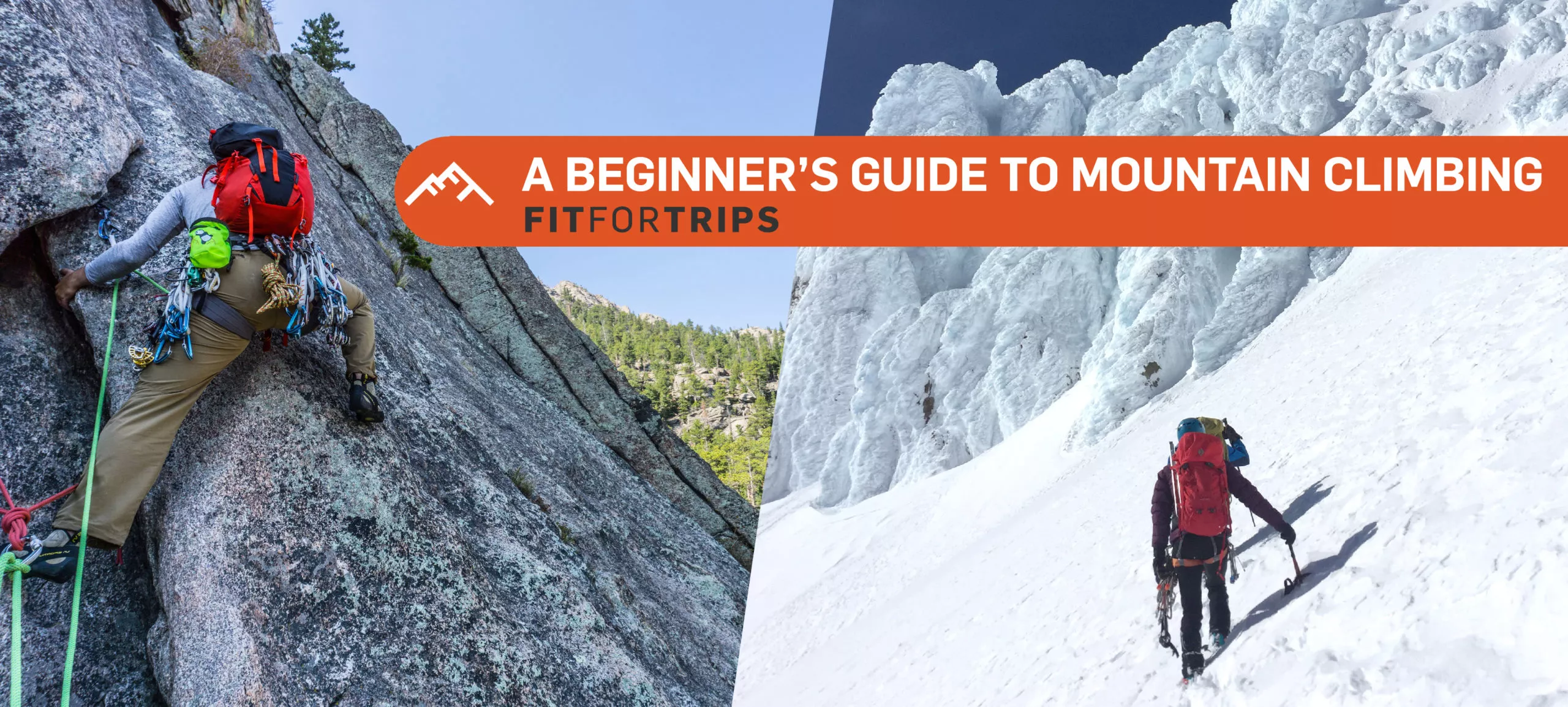
Mountain climbing can seem like a daunting task for beginners, but with the right tools, training, and knowledge, you can get started on the adventure of a lifetime. Keep reading to learn everything a beginner needs to know to start climbing mountains.
Mountain climbing 101: The difference between rock climbing and mountaineering
Mountain climbing is the act of ascending and descending a mountain face. It can be as simple as hiking up a hillside or it could demand a high level of technical skills and use of gear such as ropes, crampons, ice tools, and protective gear (i.e. helmets, anchors, belay devices).
Generally speaking, there are two different methods used when climbing mountains, also known as disciplines: rock climbing and mountaineering. These disciplines require different skill sets and have various styles that are key to learn when you’re a beginner.
Rock Climbing Defined
Even for beginners, mountain climbing could include rock climbing, which is the act of scaling a rock feature that is vertical in nature. Some examples would be a boulder, wall, or mountain face. There are various styles of rock climbing such as aid climbing, free climbing, free soloing, and bouldering.
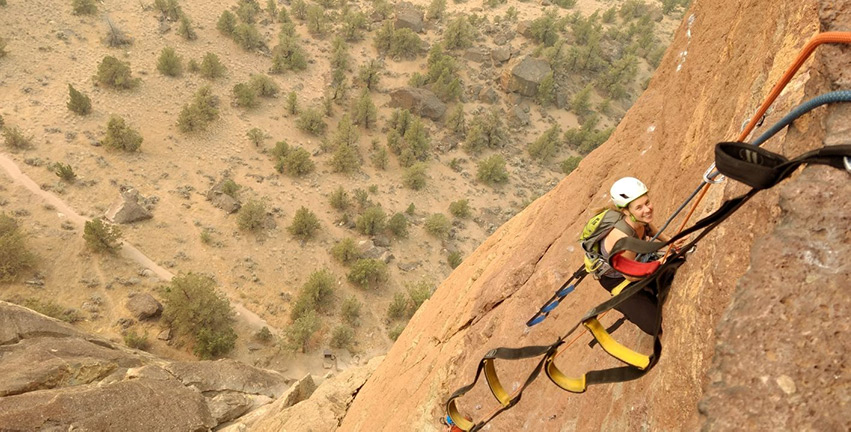 Aid Climbing is a style of climbing that involves attaching devices to fixed or placed protection that is then used to stand or pull on to make upward progress.
Aid Climbing is a style of climbing that involves attaching devices to fixed or placed protection that is then used to stand or pull on to make upward progress.
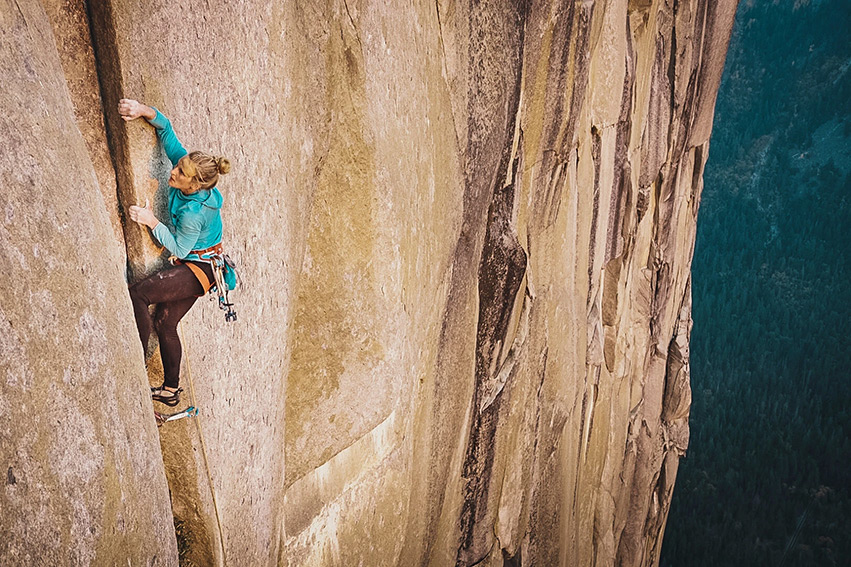 Free climbing is your “traditional” style of rock climbing where one climbs without the assistance of devices used in aid climbing; the use of ropes and belays is still involved.
Free climbing is your “traditional” style of rock climbing where one climbs without the assistance of devices used in aid climbing; the use of ropes and belays is still involved.
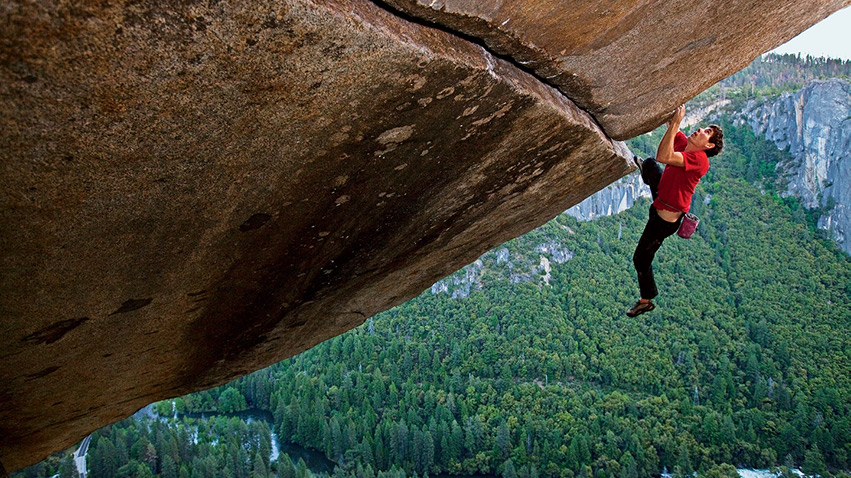 Free Soloing is the style of climbing where a climber uses no artificial aids for support and has no rope or other safety equipment for protection in case of a fall.
Free Soloing is the style of climbing where a climber uses no artificial aids for support and has no rope or other safety equipment for protection in case of a fall.
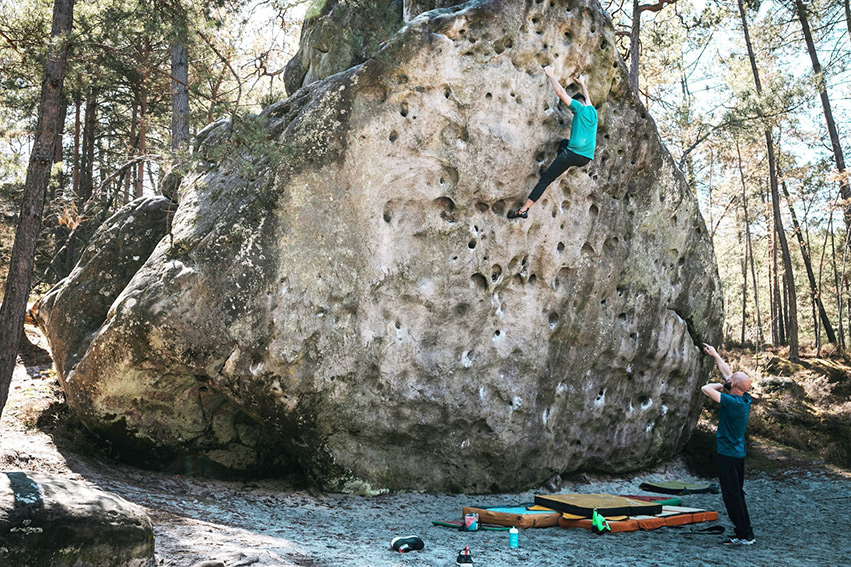 Bouldering is a climbing style similar to free soloing that is done on small rock formations or artificial walls without the use of ropes or harnesses. Bouldering is a great way for beginners to start learning rock climbing techniques.
Bouldering is a climbing style similar to free soloing that is done on small rock formations or artificial walls without the use of ropes or harnesses. Bouldering is a great way for beginners to start learning rock climbing techniques.
Mountaineering Defined
Mountaineering is the sport of climbing mountains. It involves travelling vertically and horizontally while using a variety of styles such as scrambling, mixed climbing, and alpine climbing. The style and skills used when climbing mountains is usually dictated by the terrain’s demands and difficulty.
 Scrambling is a style of mountaineering that involves climbing up and over steep or rough ground using one’s hands and feet. Scrambling could be considered an extreme version of hiking.
Scrambling is a style of mountaineering that involves climbing up and over steep or rough ground using one’s hands and feet. Scrambling could be considered an extreme version of hiking.
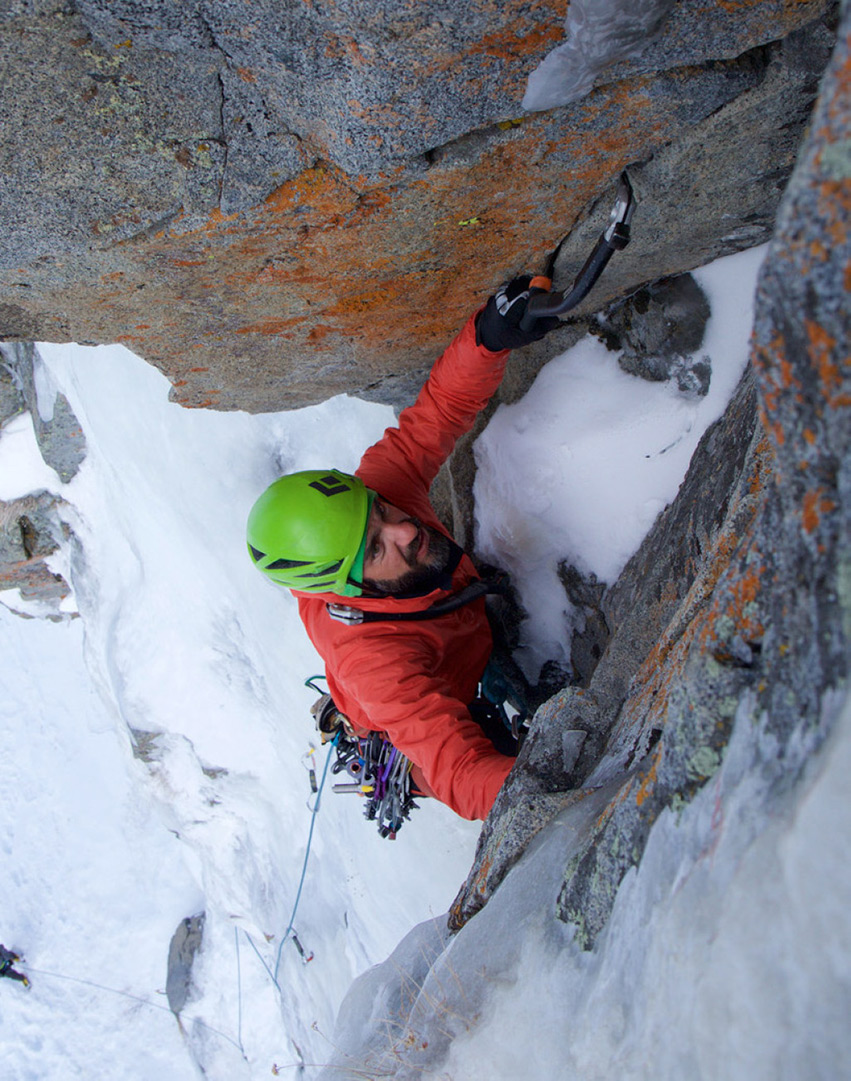 Mixed Climbing is a style of mountaineering that involves both ice and rock climbing. This is usually a technical style of climbing that features the use of ice axes, crampons, and both rock and ice protective gear (cams, nuts, ice screws, etc.).
Mixed Climbing is a style of mountaineering that involves both ice and rock climbing. This is usually a technical style of climbing that features the use of ice axes, crampons, and both rock and ice protective gear (cams, nuts, ice screws, etc.).
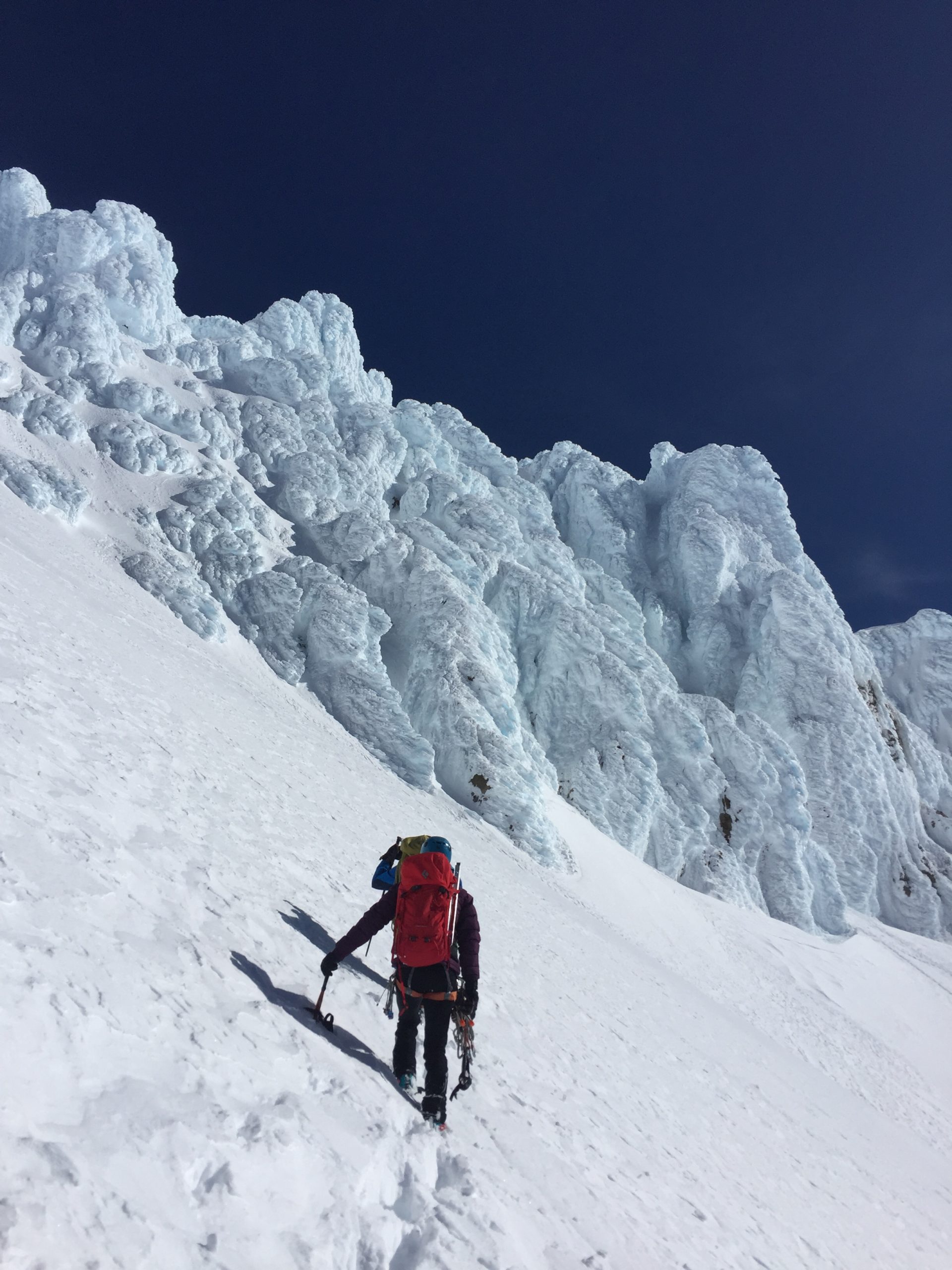 Alpine Climbing could be used interchangeable with mountaineering. It is the act of climbing a mountain in an alpine environment where the primary goal is to ascend to the summit. This style of climbing can be either non-technical or technical.
Alpine Climbing could be used interchangeable with mountaineering. It is the act of climbing a mountain in an alpine environment where the primary goal is to ascend to the summit. This style of climbing can be either non-technical or technical.
What is the best mountain to climb for a beginner?
There are many factors one should consider when determining if a mountain is easy or difficult to climb. The simplest one to consider is size: larger mountains typically have a higher level of difficulty due to altitude, time, weather, and other factors.
Another simple factor to consider is the overall distance and elevation that needs to be covered, along with the steepness of the slope you must travel on. This can be valuable information for beginner mountain climbers as it helps you decide whether you are fit for the climb and/or what you need to do to get fit for the climb. Also, steeper terrain is more demanding physically and usually requires the use of technical tools. Other very important factors are the climb’s degree of difficulty, the technical skills and tools required, and the best time of year to attempt the climb. An easier climb would be one that is low in distance, total elevation, overall elevation gain, and overall difficulty. An easier climb will require minimal technical gear and skills as well, which is ideal when considering mountain climbing for beginners.
Here are some examples of popular mountain climbs for beginners in the Pacific Northwest ranked by their difficulties from easiest to hardest
- Mount Saint Helens (Native Name: Loowit)
- Total Elevation: 8,365 ft
- Elevation gain of climb: 4,500 ft (summer) / 5,000 ft (winter)
- Total Distance: 10 mi (summer) / 12 mi (winter)
- Technicality: No technical gear necessary (summer), crampons and ice axe needed (winter).
- Mount Adams (Native Name: Pahto)
- Total Elevation: 12,276 ft
- Elevation gain of climb: 6,700 ft
- Total Distance: 12 mi
- Technicality: Crampons and ice axe needed most months.
- Mount Hood (Native Name: Wy’ East) – South Side Route
- Total Elevation: 11,239 ft
- Elevation gain of climb: 5,400 ft
- Total Distance: 9 mi
- Technicality: 45 degrees snow slope above high consequence terrain (Active fumaroles and exposed rock). Crampons and ice axe needed. Rope optional. Avalanche training recommended.
- Mount Rainier (Native Name: Tahoma) – DC (Disappointment Clever) Route
- Total Elevation: 14,411 ft
- Elevation gain of climb: 9,000 ft
- Total Distance: 9 mi
- Technicality: Crampons and ice axe needed. Crevasse navigation experience required. Glacier travel gear and crevasse rescue gear required. Winter/snow camping gear and experience required. Avalanche training recommended.
- Denali
- Total Elevation: 20,310 ft
- Elevation gain of climb: 13,500 ft
- Total Distance: 13 mi
- Technicality: Crampons and ice axe required. Crevasse navigation experience required. Glacier travel experience and gear required. Crevasse rescue gear required. Expedition experience required. Winter/snow camping experience required. Avalanche training required. Fitness to pull heavy sleds required.
Mountain climbing for beginners: where to get started
1. Decide which mountain you want to climb
- Create a list of mountains. Remember to start small.
- Progress to bigger and more technical climbs as you gain experience and skills.
If you decide you want to climb a mountain like Denali, expect to put in a lot of hours training, gaining knowledge, planning, and preparing.
2. Begin preparation phase
- Decide whether to climb with a guide or with a team of competent friends/individuals.
- Research the companies that guide on that mountain, contact them, and schedule a trip.
- If you choose to climb unguided, skip to #3 below.
If you want to do a guided trip then, generally speaking, your research is over after finding the right company. The guiding company will provide information on how to prepare, what gear is needed, and answer any other questions you have. Taking a guided trip is the easiest and the safest way to climb a mountain.
3. Research the mountain
- Select the specific route you are planning to climb and research it in depth.
- Choose your gear.
There is more leg work that needs to be done if you choose to climb a mountain unguided. Your research phase is very important because it will help you figure out what gear you need, what skills you need, what you will encounter on the route, and what fitness level you need to successfully complete the route. Once you have researched your climb ad nauseam, you are ready to move to the planning phase of your preparation.
4. Planning phase
- Research weather.
- Figure out travel plans.
- Determine total amount of trips days.
- Plan out route in detail.
- Decide which skills are necessary and get the proper, professional training.
- Finalize gear.
- Sketch out your training program or let Fit For Trips craft it for you.
- Scheme contingency plans in case things go wrong.
After you have planned everything out, it is time to train. You may need to just train physically; you may need to train mentally; you may need to learn and practice new skills (this is best done by taking a course). Your training depends entirely on your individual situation and your goals for your trip.
Is mountain climbing for beginners of every age?
Many people ask “Can I start mountaineering at 40?” The answer is a resounding “Yes!” Similar questions people search for online can be answered the same way:
– Is 30 too old to start mountaineering? No!
– Is 50 too old to start mountaineering? No!
There is no age that dictates whether you can overcome the challenges and enjoy the rewards of mountaineering.
If you can answer ‘YES’ to all the questions below, then it does not matter what age you are:
- Do you have the drive to prepare physically and mentally?
- Do you have the curiosity and discipline to learn the skills?
- Are you injury free or do you have physical issues that your doctor or physical therapist will clear you for exercise/training and high altitude physicality?
Mountaineering is for everyone and anyone can do it. I have seen people from all walks of life, all fitness levels, and all ages enjoying the mountains as mountaineers. If you are interested in getting into mountaineering, the best thing to do is seek out the proper education, connect with others who are mountaineers, and start small.
Mountain climbing for beginners near me
The easiest way to find mountains to climb in your area is to use Google. Simply search “mountains near me,” “mountain climbs near me,” or “mountaineering near me” to get started. Another great resource would be to look up guiding companies in your area. Guiding companies are great resources for information and know their local mountains well. You could also check Facebook to see if there are any mountaineers or mountain climbing groups in your area or you can join one in an area you wish to visit.
